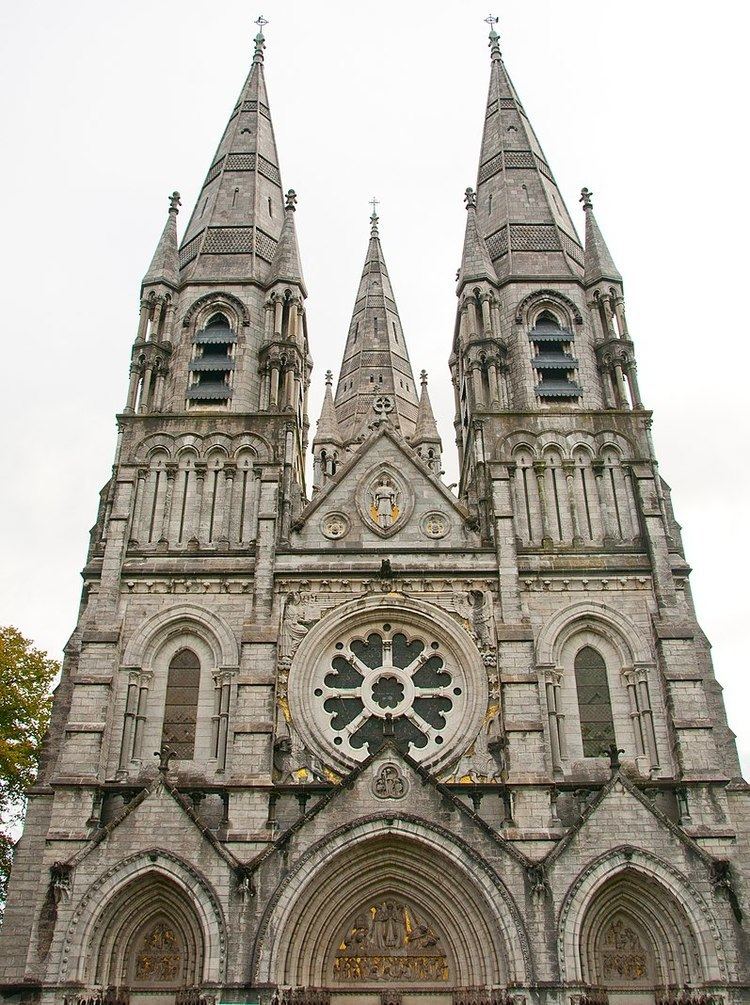Country Ireland Dedication Saint Fin Barre Completed 1879 Phone +353 21 496 3387 | Groundbreaking 1865+ Opened 1879 | |
 | ||
Similar Church of St Anne - Shandon, Cork City Gaol, Fitzgerald's Park, Spike Island - County C, Fota Wildlife Park Profiles | ||
Saint fin barre s cathedral church cork ireland
Saint Fin Barre's Cathedral, (Irish: Ardeaglais Naomh Fionnbarra) is a cathedral of the Church of Ireland in Cork city, Ireland. It is in the ecclesiastical province of Dublin. Begun in 1863, the cathedral was the first major work of the Victorian architect William Burges. Previously the cathedral of the Diocese of Cork, it is now one of three cathedrals in the Diocese of Cork, Cloyne and Ross.
Contents
- Saint fin barre s cathedral church cork ireland
- Saint fin barre s cathedral ardeaglais naomh fionnbarra
- History and architecture
- List of Deans of Cork
- Organ
- Organists
- Burials
- References
Saint fin barre s cathedral ardeaglais naomh fionnbarra
History and architecture
The current cathedral is built on the site of at least two previous structures dedicated to Finbarr of Cork. The first dated from the 7th century, with works continuing through the 12th century. This building was damaged during the Siege of Cork (1690), and a new structure was built in 1735 - though elements of the earlier spire were retained.
This structure remained until the 1860s, when a competition for the building of a new larger cathedral was held 1862. In February 1863, the designs of the architect William Burges was declared the winner of the competition to build a new cathedral of St Fin Barre. His diary records his reaction - "Got Cork!" - whilst the cathedral accounts record the payment of the winning prize sum of £100. Building work took seven years before the first service was held in the cathedral in 1870. Building, carving and decoration continued into the 20th century, long after Burges's death in 1881.
The style of the building is Early French, Burges's favoured period and a style he continued to favour throughout his life, choosing it for his own home, The Tower House, in Kensington. The stipulated price for construction was to be £15,000, a sum vastly exceeded. The total cost came to significantly over £100,000. Burges was "unconcerned," writing to the Bishop of Cork in January 1877: "(In the future) the whole affair will be on its trial and, the elements of time and cost being forgotten, the result only will be looked at. The great questions will then be, first, is this work beautiful and, secondly, have those to whom it was entrusted, done it with all their heart and all their ability."
Burges oversaw all aspects of the design, including the architecture of the building, the statuary, the stained glass and the internal decoration. The result is "undoubtedly Burges's greatest work in ecclesiastical architecture".
List of Deans of Cork
The deans of Cork include the following, with a number of deans being elevated to the episcopacy.
Organ
The organ was built in 1870 by William Hill & Sons, with 3 manuals and 40 stops. The action on the Great was a form of pneumatic action (possibly Barker lever) on the Great, and tracker for the other two manuals. The instrument was overhauled in 1889 by the Cork organ-building firm, T.W. Magahy, who added three new stops. As part of these works, the organ was moved from the west gallery (balcony) down to a pit in the north transept, where it sits today.
The next major overhaul was in 1906 by Hele & Company of Plymouth, who added a fourth manual (the Solo). By this stage, the action of the organ was entirely pneumatic.
Other work was completed on the organ in 1965–66, when J. W. Walker & Sons Ltd of London overhauled the soundboards, installed a new console with electropneumatic action, and lowered the pitch. The organ then had 4 manuals, 56 stops, and 3012 pipes.
Starting in 2010 the organ builder Trevor Crowe was engaged to reconstruct and expand the organ, when it was supplemented with a west gallery nave division and tonal enhancements to the main instrument. This included a full length 32' extension to the pedal trombone. The work also involved a revised layout to enable the previously buried organ to sing unimpeded into the body of the cathedral. Crowe's layout improvements intended to overcome the obstacles of its subterranean location, and the west end nave division improves accompaniment to congregational hymns. Most of the choir organ is housed in an enclosure attached to the console, the lid of which can be raised or lowered electrically by the organist. At 88 speaking stops, it is now the largest organ on the island of Ireland.
